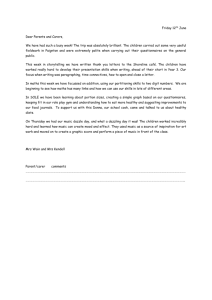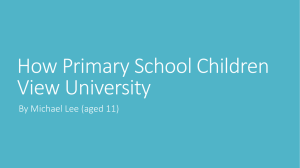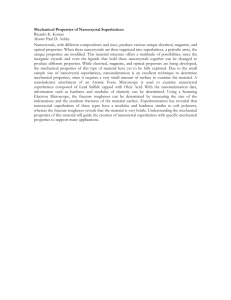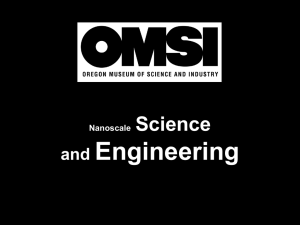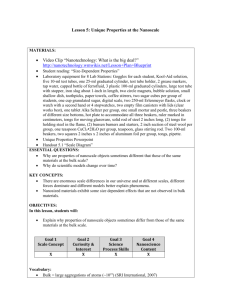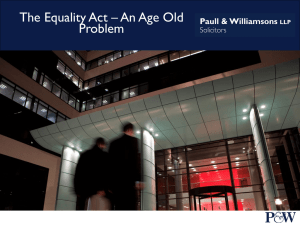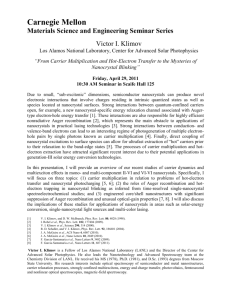Teachers Reports & Reflections - Nano
advertisement
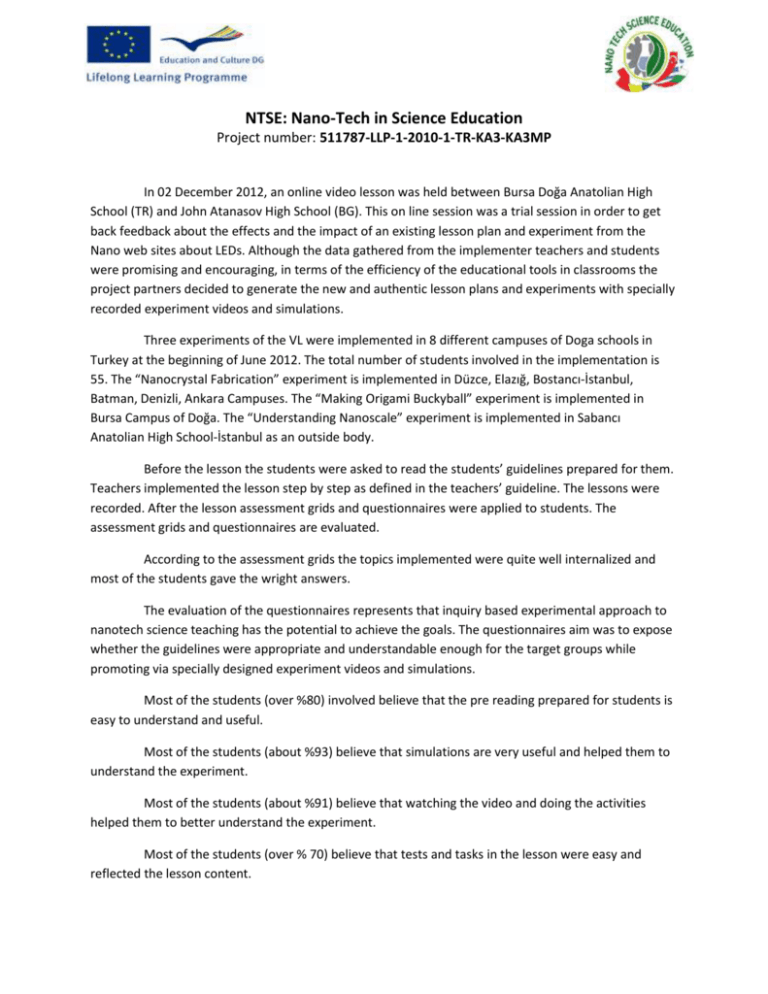
NTSE: Nano-Tech in Science Education Project number: 511787-LLP-1-2010-1-TR-KA3-KA3MP In 02 December 2012, an online video lesson was held between Bursa Doğa Anatolian High School (TR) and John Atanasov High School (BG). This on line session was a trial session in order to get back feedback about the effects and the impact of an existing lesson plan and experiment from the Nano web sites about LEDs. Although the data gathered from the implementer teachers and students were promising and encouraging, in terms of the efficiency of the educational tools in classrooms the project partners decided to generate the new and authentic lesson plans and experiments with specially recorded experiment videos and simulations. Three experiments of the VL were implemented in 8 different campuses of Doga schools in Turkey at the beginning of June 2012. The total number of students involved in the implementation is 55. The “Nanocrystal Fabrication” experiment is implemented in Düzce, Elazığ, Bostancı-İstanbul, Batman, Denizli, Ankara Campuses. The “Making Origami Buckyball” experiment is implemented in Bursa Campus of Doğa. The “Understanding Nanoscale” experiment is implemented in Sabancı Anatolian High School-İstanbul as an outside body. Before the lesson the students were asked to read the students’ guidelines prepared for them. Teachers implemented the lesson step by step as defined in the teachers’ guideline. The lessons were recorded. After the lesson assessment grids and questionnaires were applied to students. The assessment grids and questionnaires are evaluated. According to the assessment grids the topics implemented were quite well internalized and most of the students gave the wright answers. The evaluation of the questionnaires represents that inquiry based experimental approach to nanotech science teaching has the potential to achieve the goals. The questionnaires aim was to expose whether the guidelines were appropriate and understandable enough for the target groups while promoting via specially designed experiment videos and simulations. Most of the students (over %80) involved believe that the pre reading prepared for students is easy to understand and useful. Most of the students (about %93) believe that simulations are very useful and helped them to understand the experiment. Most of the students (about %91) believe that watching the video and doing the activities helped them to better understand the experiment. Most of the students (over % 70) believe that tests and tasks in the lesson were easy and reflected the lesson content. Most of the students (about %95) believe that assignments helped them to understand the subject matter better. Most of the students (over % 95) enjoyed doing the planned lesson. The teachers expressed that implementing lessons like these is giving students the opportunity to understand better what is taught, to internalize and to connect with real life. The most challenging part for the implementers was finding students at school in the last days of the school. Therefore, there were not many students (not a full class) to be involved with the experiments and activities. The other difficulty for the implementers was to get started with the “Nanocrystal Formation” experiment. Since the students had no idea about nanotechnology and nanoscale materials, they found the lesson challenging. Still, they expressed that they find the lesson inspiring and encouraging. The students should have had the preliminary knowledge about nanotechnology and nanoscale. The reason we started with the “Nanocrystal Fabrication” was that the experiment had the authentic experiment video, simulations and lots of activities. It is suggested to start with the experiment “Understanding Nanoscale” and follow the experiment order in VL. In the next school year the implementations are planned to get started in the order given in VL. In 14 May 2012 an on-line lesson between John Atanasov Electronic High School in Sofia and Acarkent Doga Anatolian High School students and teachers. Before the on-line session the students were asked to read Students Guideline of “Nanocrystal Fabrication”. The Activity-3 in the Ss Guideline was implemented in the classrooms and students step by step followed the instructions. At the end of the lesson, the students from John Atanasov High School presented a project of theirs. A questionnaire was applied to the teachers after the session. According to the evaluation of these questionnaires the general impact of the implemented activity is very encouraging. The students and the teachers find the activity inspiring and it helps to visualize the unseen. The BG teacher expresses that although the lesson does not exist in the curriculum it is well related to the general curriculum. In May 2012, VL and the “Nanocrystal Fabrication” experiment were presented to teachers and prospective teachers (about 30) in Romania. The prospective teachers expressed that the experiment having a great potential for the students, being taken into consideration to be presented in Physics / Chemistry classes. Since nanotechnology is not included in any of the curriculums yet, the topics of experiments do not exist in the current curriculums. The experiment guidelines were prepared via taking into the consideration of curriculum matches and the high rated topics defined in the questionnaires applied to the students in May 2011.

